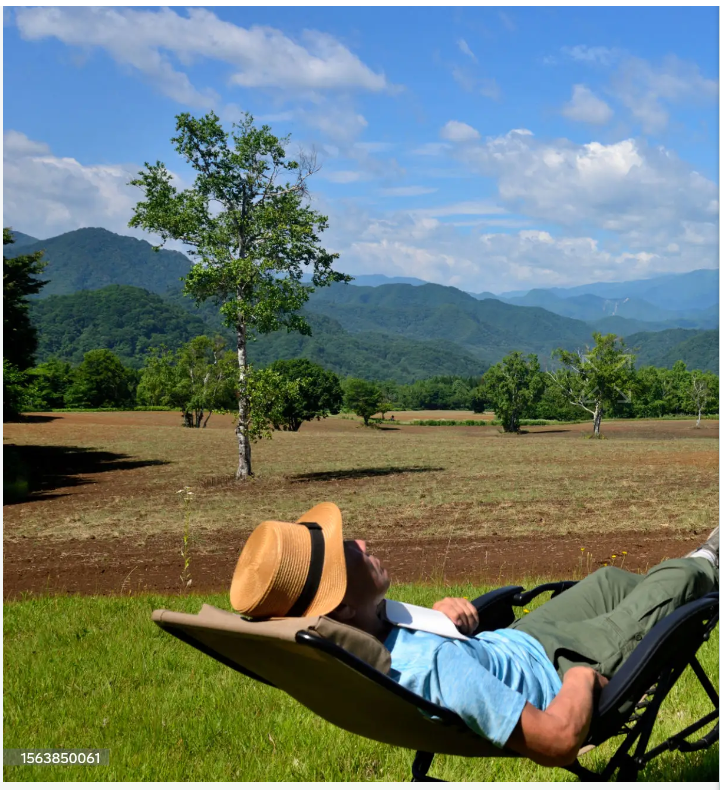
RANDOM THOUGHTS FROM THE RECLINER AND INFORMATION ON THE DRAFT
- As long as I have been a Dodger fan, I just never understand slumps. I’ve seen more than my fair share of Dodger team slumps over the years, and I’ve seen and played enough baseball to know that they happen every year. Yet, whenever the Dodgers go through a slump, similar to the past several weeks, I find myself having a conversation with my TV, which consists mostly of just muttering “are you freaking kidding me?”
- As much success as they seem to have offensively, it appears to me that the Dodger hitters have as poor a understanding of the strike zone as any team I have witnessed. It may be purely my imagination, but the Dodgers swing at far too many pitches outside the strike zone. Certainly, RVS and his minions have also observed this and are taking some corrective action.
- That said, we now have Ohtani on this team for the next hundred years. I’ll take that. He’s pretty darn good, if you ask me. Betts, Ohtani, Freeman and Smith is a daunting first four batters for a pitcher to face (unless of course it’s Dakota Hudson, who could seem to care less, as he is going to mow them down with the greatest of ease). Now, if only the bottom 4 hitters could get it going. I’m giving Teoscar a pass on this analysis, because he is who he is and he’s going to do what he does, hit a good share of homeruns, strike out a lot, yet get some timely hits. He’s the right handed Mad Max.
- Speaking of which, who knew that Max Muncy was the glue that held this team together. I’m just sayin’ that once he went on the shelf, the Dodgers started to crater a bit. Hurry back Max, we need you!!
- Yoshinobu Yamamoto is going to be all right. If you compare him to the other good Japanese pitchers that played MLB, he matches up quite nicely. Yu Darvish was 25 his first year in the United States and went 16-9; Hideo Nomo (26) went 13-6; Mashiro Tanaka (25) was 13-5; Kodai Senga (30) was12-7; Daisuke Matsuzaka (26) was 15-12; Kenta Maeda (28) was 16-11; and Hiroki Kuroda (31) was 9-10. I think Yoshinobu is holding his own with these pitchers and, at his age, you have to believe there are better days ahead.
- Gavin Stone is pitching against the Rockies as I finish this article. He has certainly done better than we could have possibly thought he would do. If he continues to harness the command that he has show recently, he is going to be a very nice pitcher this year.
- It reinforces how hard playing baseball is when you see players like Corbin Carroll and James Outman struggle like they have in their sophomore year.
I’m not sure why, but every year I get excited about the MLB baseball draft (albeit less so as I grow older). The selection of young players is something akin to bringing home a new puppy from the animal shelter. You’re fall in love with the selection, but you’re never quite sure what you’re bringing home with that pup. He may be that remarkable special pet that becomes a member of the family for years to come. Or you may wind up with a yapping dog that, no matter how much training you provide, never stops barking, chewing on your shows or peeing on the carpet and you can’t wait for the time you can unload him on someone else. Nevertheless, I love this time of year and I root for the Dodger selections for as long as they ‘re part of the organization.
I’ve also had a love for amateur baseball for a very long time. I coached youth ball and high school baseball for a long time. I have also had the unmatched joy watching my sons play college ball. As a result, I’ve naturally followed high school and college baseball teams. And I’ve followed players and acquaintances that I encountered over the years as they continued with their playing careers. Recently, although I have never been to Louisiana, I have become and LSU Tiger baseball fan, primarily because their current coach, Jay Johnson (who is one of the finest young baseball minds in the country I might add), is a family friend with whom my oldest son played baseball at Point Loma University. For me, that has added an additional level to my fandom as I watch these young players compete and chase their dream of playing in “the show” and/or grow into being coaches. Frankly, I enjoy watching amateur baseball as much, if not more, than the pro-game. It’s hard to beat the excitement of the college playoffs for the College World Series. If you don’t believe me, you should take some time and watch the college regional playoffs that are taking place as I write this. Next weekend, the Super Regionals will take place and, while the talent level isn’t as deep as in the MLB, the passion and excitement level are second to none and off the charts. Perhaps that is why the MLB Draft has such fascination for me.
This year, the MLB Draft will be held Sunday, July 14th through Tuesday, July 16th. The draft will be held in Fort Worth, Texas, in conjunction with the All-Star game and festivities. The first two rounds and Competitive Balance Rounds A and B, the Prospect Promotion Incentive pick, plus three compensation picks will take place on Sunday, July 14th. Rounds 3-10 will take place on July 15th, and Rounds 11-20 are set for July 16th. A team can be awarded a Prospect Promotion Incentive pick if an eligible player accrues one year of service as a rookie and then factors into a major award. That means he either has to win his league’s Rookie of the Year award or place in the top three in MVP or Cy Young voting prior to qualifying for arbitration. The 10 lowest-revenue clubs and the clubs from the 10 smallest markets are eligible to receive a Competitive Balance pick (fewer than 20 clubs are in the mix each year, as some clubs qualify under both criteria). All eligible teams are assigned a pick, either in Competitive Balance Round A or Round B. Round A falls between the first and second rounds, while Round B comes between the second and third. Teams that draft in the Competitive Balance Rounds also receive more international bonus pool money. The thought behind these incentives is that MLB wants teams like the Orioles and Royals to be more competitive. Looks like that idea is working. Additionally, Competitive Balance Round picks are the only picks that can be traded, albeit they can only be traded once, by the team that received the pick initially. Teams receiving the pick in a trade, cannot then turn around and trade the pick to another team.
For years, the Draft was always held in June, but in 2022 MLB changed the date to July. This change was made, ostensibly, to spice up the all-star ratings and to avoid conflict with the College World Series. It also coincided with MLB’s attempt to make the Draft a “much watch” TV event, which I might add has failed miserably.
Initially, college coaches bemoaned the fact that the draft took place during the College World Series, because whether or not a player got drafted or where they got drafted, ostensibly, impacted their play in the series. With the change now made, most college coaches find they don’t like the later July date because it creates far too much uncertainty for them being able to determine if the players they recruited will make it to campus or not. Because the Draft is later in the summer, it leaves college coaches with far less time to fill holes on a roster that inevitably happen due to players lost to the draft. It places their roster-building plans on hold, and then there is a mad dash to fill those holes through the transfer portal.
This is a dicey situation for them, as most coaches use the fact that x number of their past players have been drafted and/or played in the MLB.
As to making the Draft must watch TV, frankly, that’s not going to happen until teams are allowed to trade draft picks, up to and including the day of the draft. In my opinion, adding that element to the draft would make it far more interesting and potentially beneficial to the lesser teams. Being able to trade, for example, a second round pick for a minor leaguer who has an established track record, may be more enticing to a team in need of a more immediate infusion of talent, while the other team is willing to roll the dice on acquiring a player through the draft they view as a better long term prospect. One other thing MLB should consider is to have anyone other than Rob Manfred host the first couple of rounds of the draft. Try as he may, he is more boring than watching paint dry.
As to this years Draft, in the first 10 rounds, the Dodgers will pick Nos. 23, 98, 128, 190, 220, 250, 280 and 310. In the 11th round they’ll have pick 340 and then have the 30th pick thereafter for the remaining 9 rounds. The Dodgers’ bonus pool is $6,114,700, which happens to be the second lowest among the 30 teams, with only Houston having a lower bonus pool. Bonus pools are calculated by adding the slot values of every pick through the first 10 rounds. The slot values for the Dodgers picks are: Pick 23: $3,676,400; Pick 98: $745,000; Pick 128: $556,300; Pick 190: $315,500; Pick 220: $247,900; Pick 250: $205,800; Pick 280: $188,800 and Pick 310: $179,000. The Dodgers forfeited their 2nd and 5th round picks for signing Shohei Ohtani. That’s a sacrifice, I would regularly and gladly make. Their 3rd, 4th and 6th through 20th round picks are in their normal position. The slot values for the draft are determined each year by matching the growth in revenues in baseball. The 2023 draft, the 23rd pick had a slot value of $3,380,000 compared to this year’s $3,676,400 slot value—an 8.8% increase. Presumably then, baseball revenues increased by that amount across the board. I wonder if Scott Boras knows that information. It might help him in asking for higher salaries for his clients.
On June 18-23, MLB will conduct a Draft Combine at Chase Field in Phoenix. This combine is an opportunity for the 300 prospects, who were preselected by their prospect rankings, to further impress and interact with scouting directors and team general managers. In 2023, 39 of the top 50 Draft selections, 75 of the top 100 picks and 217 of the 298 Combine attendees overall were selected in the MLB Draft. So keep your eyes on the Combine participants, as there is a strong likelihood they will be drafted. In the past, it was also not unusual for the Dodgers to have prospects flown into LA for private workouts at Dodger Stadium. I assume those workouts will still happen, but teams are very tight lipped about who they bring into town for these workouts.
For most fans, there is not much thought given to the draft other than to pick the best player available and call it a day. Unlike football and basketball, however, selecting players in a MLB draft is a bit more of a crap shoot, although not as much as one might think. Certainly, being able to select a player who can succeed at the MLB level for a fraction of the cost of a similarly productive free agent makes the draft a very important opportunity for each team. In the article “Is The Draft Really A Crapshoot? Not Exactly” written by Kyle Glasser for Baseball America, he notes theat “for the most part, teams that pick within the first ten picks know what they are getting. Since Draft was started in 1965, players drafted first overall have produced 1083 career WAR, which is 400 career WAR higher than players chosen at any other pick. In fact, the only five draft positions to produce at least 500 WAR come in the top six picks of the draft. Outside of the top 10 picks, however, outcomes become extremely varied. For example, players picked No. 22 overall have a higher career WAR than those picked Nos. 11-20. Players picked No. 74 overall have delivered roughly equivalent production as those drafted No. 29. Players drafted with the 109th pick have exceeded the careers of those drafted at the Nos. 21 and 24 picks, selections traditionally made in the first round. Players drafted No. 200 overall have yielded a higher career WAR than more than half of the selections made in front of them.”
Moreover, on average, it takes draftees 3 years to earn a promotion to the Major Leagues. This demonstrates that there is much more randomness contributing to the success or failure of baseball players selected in the draft. Bear in mind, that roughly 17% of players drafted make it to the majors, which adds some perspective to the average time it takes to reach the majors. The vast majority simply don’t make it. Also, it is only every so often that a Paul Skenes comes along. And, a player of his talent is typically only available in the first 10 picks of the draft and is not available every year.
Therefore, teams need to make smart decisions in selecting players in the draft. That doesn’t end the story as the players, particularly high school seniors, also have very tough decisions to make when drafted. Approximately 10.5% of college eligible players get drafted. That number drops to 0.5% for high school seniors. Before the draft, most high school players have “committed” to attend a particular college. Thus, among other factors, they have to decide what dollar figure is worth taking away their college experience and education. Presently, the money offered by MLB has the advantage, because Division I baseball teams are only allowed to distribute 11.7 scholarships for 35 roster spots. Hence, in order to get the top players to come to campus college baseball coaches have to be creative in their accounting, quite often having to emulate the magicians pulling a rabbit out of a hat. That has changed, somewhat, in reasons years with the introduction of the NIL (name, image and likeness rights) for which college athletes can be paid. However, this is, more often than not, limited to the “star” players. Your third string right fielder is not likely to be doing car commercials anytime soon. This scholarship limitation is about to change, as a result of a settlement which is in the works three separate and recent antitrust cases: House v. NCAA, Hubbard v. NCAA and Carter v. NCAA each of which arise from athletes, in various non-football related sports, claiming the NCAA violates antitrust law. In 2020, former Arizona State swimmer Grant House and TCU/Oregon basketball player Sedona Prince sued the NCAA for barring NIL payments for athletes prior to 2021, when the NCAA first changed its rules to allow such payments. House v. NCAA also raised complaints for a post-NIL world, specifically concerning the lack of TV broadcast revenue gained by players. The athletes alleged that conferences work together with the NCAA to exploit student-athlete labor and effort without legal representation and also limit the compensation athletes can receive, while the NCAA and the athletic conferences pull in huge profits. In addition, the athletes claimed the NCAA’s restrictions on NIL and control of TV markets prevented them from profiting on their true market value, which is much more than scholarships and education funding. Without getting lost in the weeds of these cases and the various terms of the settlement (which might be the subject of a later article), one of the main elements will be that athletes for sports other than football and basketball will be able to receive “full-ride” scholarships for their participation in college sports. This will be a huge boon for college baseball coaches, and it will impact the MLB draft.
In addition to the money aspect, a commitment to play for a college comes with the dream of competing for conference championships or making it to the College World Series and creating a lifelong bond with teammates. If any of you question whether or not this has value, I invite you to watch the Division 1 College World Series bracket playoffs. Frankly, the excitement generated by those games is second to none. I get great enjoyment out of watching these games. A player would also have to determine the long-term value of his college scholarship. Then he also has to look at the time-value of having a college degree versus not having a college degree. This can amount to hundreds of thousands of dollars over their working career. The value of a signing bonus can also be misleading. It might be cool for a high school kid to sign for $100k, but they’ll soon learn that 15-20% (or more) of the bonus is going to be paid towards taxes. Then another 6% will be paid to their agent. They will also have to take into consideration that they’ll be working for less than minimum wage while they are in the minors. Thus, f they are wise, the signing bonus becomes more of an advanced payment of salary which must be spread out over their minor league career, in order for them to have some type of livable existence. It’s definitely not going to be enough money to leave them with a nest egg when their baseball career ends without having made it to the majors. High school players (and some college players) will often negotiate participation in MLB’s Continuing Education Program (CEP) as part of their signing bonus. Ostensibly, this provides for funds to be available during or shortly after the conclusion of their career to pay for tuition and living expenses at an accredited institution. That’s a great perk, especially for players without a full scholarship. However, as nice as it sounds it doesn’t always work so smoothly for many players after their playing careers, especially signees with no college credits to their name. CEP payments are subject to income and employment tax withholding at the time of payment, thus the payments will be less than a full scholarship. Also, if a player spends 2 or 3 years in the minors before he hangs it up, he may have married his high school sweetheart and have started a family during that time. With the realities of life now looming much larger to him than when he was drafted in the 18th round and his dreams of playing professional baseball were at their highest peak, pursuing a college education may have to take a back seat to getting a job and earning a living.
To help you get a clearer picture of how fickle the draft can be, I want to show you the players that were chosen in the past 5 drafts at the positions the Dodgers draft this year:
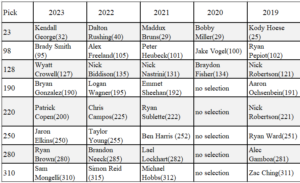
As you can see, not too many household names. Of the 35 players listed, 5 have reached the majors (Williams, Toglia, Harris, II, Curry, Brennan), 5 have cracked their teams top 30 prospect list(Hampton, Velazquez, Bush, Jr., Bergert, and Raya) and the rest are still trying, they’re injured or have given up the dream and headed on to other means to make a living.
In the past 5 years, the Dodger have made the following selections in proximity to where they are selecting this year:
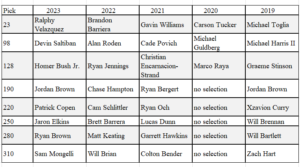
Of the players selected by the Dodgers have 4 players made their top 30 prospects (Rushing, George, Bruns and Heubeck), four have made it to the majors(Miller, Pepiot, Sheehan and Nastrini(not with Dodgers)). Others have been traded or released and the jury is still out on several of them.
Overall, these are the best players chosen in the draft at or near the positions the Dodgers select:
| Pick | Players |
| 23 | Jason Kendall(23); Rick Sutcliffe(21); Rafael Palmeiro(22); Rondell White(24); Mike Trout(25); Alan Trammell(26); and Vida Blue (27) |
| 98 | Jack Morris(98); David Justice(94); Amos Otis(95); Rickey Henderson(96); Dave Goltz(97); Lou Whitaker(99); and Ron Gant(100) |
| 128 | Cecil Cooper(128); Garret Anderson(125); Bob Boone(126); Greg Gagne(129); Derek Norris(130) and Devon White(132) |
| 190 | David Bell(190); Erik Bedard(187); Casey Blake(189); Josh Harrison(191) and Shane Victorino(194) |
You can see that there is a drastic drop off in talent after the top one hundred picks.
- I haven’t done a parody song for quite a while, so in memory of Dodger Blue Mom who appreciated them more than most, I thought I would redo one I’ve used before, with some updates. So with apologies to Phil Ochs (who I consider to be one of the most underrated acoustic folk singers of the 1960s), I break out my version of the Draft Dodger Rag:
Oh, I’m just a typical American boy with a typical American dream,
Playing ball from dawn ’til the twilight gleams.
I bleed for this game, put my heart on the line,
But when it comes to drafting me, this is what I said:
Gomes, I’m only eighteen, with a fastball oh so fine,
I can paint the black with it at anytime.
My eyes are sharp as a hawk, with the speed of a deer,
and strength that’s off the charts.
So think of my career with the Dodgers dear,
But I won’t settle for less, Gomes just play your part.
No park can contain me, I’m a hitting machine,
Swinging for the fences, living out my dream.
I walk tall, never strike out, and I play it clean,
But if you want me on your team, you gotta pay the fee.
Gomes, I’m only eighteen, with a fastball oh so fine,
I can paint the black with it at anytime.
My eyes are sharp as a hawk, with the speed of a deer,
and strength that’s off the charts.
So think of my career with the Dodgers dear,
But I won’t settle for less, Gomes just play your part.
I’ll crush those Giants, make ’em eat dust,
With me on your side, victory’s a must.
But if you’re too stingy to meet my demand,
I’ll walk away, take my talent to another land.
Gomes, I’m only eighteen, with a fastball oh so fine,
I can paint the black with it at anytime.
My eyes are sharp as a hawk, with the speed of a deer,
and strength that’s off the charts.
So think of my career with the Dodgers dear,
But I won’t settle for less, Gomes just play your part.
So Gasparino make your choice and make it wise,
Because I’m the one you need to claim the ultimate prize.
You know that I’m worth every dime,
But keep in mind that if you don’t pay me what I’m worth
I ain’t no fool and I’ll go back to school!
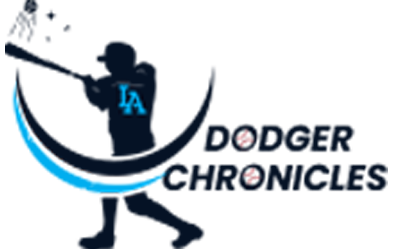
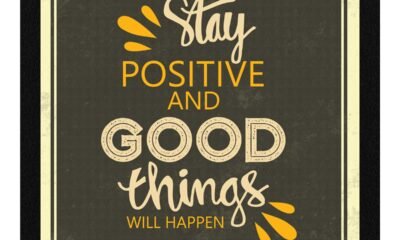

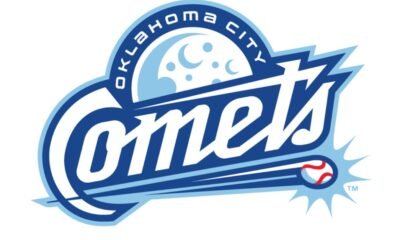

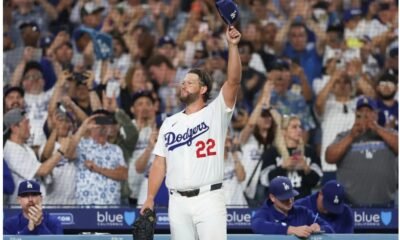







I want to welcome back Rob Schelling who has graciously accepted the role of MLB Rule 4 Amateur Draft reporter on a temporary assignment. He has authored this post and will cover the draft.
I know the draft is not for everyone, but for some of us it is like Christmas morning. It is supposed to be the lifeblood of the organization. Either as players who graduate from the draft to the 26 man roster of the team that drafted them, or drafted players later traded for established MLB players.
Anyway, thank you Rob for stepping up and helping with this assignment.
Gavin Stone was picked in the 5th round in 2020–and, if I’m not mistaken, was the Dodgers’ last pick in the covid-shortened draft. He was the 159th overall pick.
As Rob notes, Bobby Miller was the Dodgers first-round pick in that draft.
And now it looks like both Miller and Stone could fill out a six-man rotation.
The Dodgers seem to have a pretty good track record with the draft, despite some whiffs like Jeren Kendall. (Maybe Kody Hoese will be a late bloomer. No reason to give up hope yet!)
The draft is always full of surprises…
Great post Rob. Thanks. I feel like I read a book.
Where’s that pic taken? It looks similar to the 80 acres my high school buddy, also named Rob, owns. He built two houses on it, one he says is mine if I want it. I’m tempted.
As I was reading your thoughts about college players I was first struck with how little athletes value a college education, but then you covered it. I do wonder as far as earning power how much a college education means these days. Didn’t help my kid much. Didn’t help me at all.
I think minor leaguers should be paid a living wage. Actually I think everyone should, but, that’s a conversation for another blog. Out of high school I had opportunities to go pro or play college ball, but I chose a less than minimum wage government job with the U.S. Marines. With that choice came clear proof I wasn’t college material. But, in my defense, the job came with room and board. And did I ever get an education in those three years. But I digress.
It would seem that the draft after the first 10 picks is indeed a crap shoot. I would like to think the Dodgers are getting better at it but I don’t know they are any better than the other successful large market behemoths that also choose late in the draft. Maybe you mentioned that. Perhaps I should reread the post.
Anyway, thanks for the read. I enjoyed it with my morning coffee.
Thank you Badger – the picture was put into the article by Jeff D. I could only wish that I lived on 80 acres that looked like that.
I too chose to spend time in the Marines, and the education I received from that 3 year experience was quite the education indeed.
When did you serve Rob?
I salute both of you. My education came with almost 9 years in the Army. Baseball was my escape.
Hey Bear, you mentioned yesterday (I believe) that you had a birthday coming up in a couple of weeks. What date is it? I’ll be 79 on the 19th. Our birthdays must be close.
Since there doesn’t seem to be much dialogue yet about thisit might be a good opportunity to pose a discussion question I have had.
Regarding Mookie saying moving from right field to 2nd base will be easier on his body, I wonder why. Second base requires lots of quick lateral movement, throwing from akward positions, diving for balls and getting slid into. Playing right field requires longer sprints, longer throws and running into the wall.
What do you all think?
Mookie likes being close to the action. Anywhere you play you can get hurt. I had my toenail split playing first when I guy stepped on my foot and I jammed my thumb diving for a fly ball in the outfield. That hurt for a couple of weeks. Worst injury was pulling my Achilles tendon really bad when I stepped awkwardly on second base. Mookie does not want to play the outfield anymore.
Personally I think he plays baseball for a living, he’s not operating a jackhammer. He only does it 6-7 months a year and will retire a bazillionaire at age 40. Who wouldn’t want that job?
Anybody read the Dylan Hernandez piece this morning? He says the Dodgers don’t exactly look like a World Series club, and with it is a picture of Shohei bent over at the waist, face puffed up, hips completely closed swinging at a pitch that appears to have been about a foot outside.
That picture drove home the point Rob makes about managing the strike zone. Compared to the strike zone of yesteryear, as Bear mentioned yesterday was from the top of shoulders to bottom of the knee, today’s strike zone, unless Bucknor is behind the plate, is about the size of a box of Cheerios. Know it and manage it. That’s the job. Just f’n do it.
Great info Rob. I admit, I do not follow amateur baseball at all. I have watched college World Series games when USC or UCLA have been involved. I do always check out the draft and read what I can on the players the Dodgers pick. As for Muncy, he was shut down again after feeling stiffness in his oblique. I would think he is more than say a month away at least. They might need to deal for a 3rd baseman soon since they are getting so little production there, or bring up Lipcius to see if he can contribute anything.
MLB bans Tucupita Marcano from baseball for life for gambling on MLB games. Marcano is an infielder currently with the Padres. He placed the bets when he was a member of the Pirates. 25 of the bets were on the Pirates when he was a member of the organization. Four other players received one-year bans. A’s P, Michael Kelly, Phillies infielder, Jose Rodriguez, Padres P, Jay Groome and D-Backs lefty, Andrew Saalfrank. Brian Anderson signed a major league deal with the Braves. Julio Teheran signed a minor league deal with the Orioles and the Marlins are going to DFA Avisail Garcia.
Thanks Rob. What an extensive and informational piece on the draft. Really well researched, Rob.
A couple of thoughts, as I closely follow the draft each year.
I personally used my CEP money, way back when, to pay for my Bachelor’s Degree (and all of my roommates books). Apparently, I was an exception. An MLB scout told me that less than 10% of high school and Community College players who get that as part of their signing bonus, ever use it. I think at the time it was calculated as $65,000 toward my bonus money. (it might have been less in those days as my tuition was $200 a semester). But that’s bonus money the organizations don’t have to pay 90% of the time.
NIL is a new factor in the MLB draft but it’s hard to know to what extent.
Rob, as an LSU fan, you had to be delighted that Paul Skenes, who the Dodgers are scheduled to face tomorrow night, was the 1st pick last year. He signed for 9.2 million and his LSU teammates, Dylan Crews, the 2nd pick, for close to 9 million. I wonder how much these boys were paid in NIL money by LSU collectives?
I can see NIL money having influence on elite high school recruits, despite that it’s “against the rules” supposedly, to use NIL as a recruiting inducement, but we all know it is.
What’s the value of a top recruit to a top university over 3 years in NIL money? The 77th pick in the draft, 3 picks into the 3rd round, has a slot value 1 million, so everybody after 77 earn in 6 figures.
An 8th round pick, @ 226, tops out at $237,000, which is drastically chopped up by the reasons Rob explained. It seems a top recruit or transfer could make that in NIL money at a baseball school.
I don’t know the NIL$ value of a top college player but I suspect it’s an inducement to stay in a top college program.
Great article Rob. Thanks
Thank you Phil.
I’m not sure about how NIL affects college baseball programs. I intend to do some research into that subject in the future. Don’t know if it will lead to another article. However, I have to believe that for conferences like the SEC, it plays a big part. The love those southern folks have for their college baseball teams is second to none. LSU fans in particular love their Tiger baseball. Last year was definitely pretty special for them. Skenes and Crews were exceptionally talented players. Coach Johnson called them “generational players.” He had recruited Kris Bryant when he was an assistant at University of San Diego, and thought that Crews was as talented and would, perhaps, be better than Bryant in the long run.
Good for you on using the CEP funds made available to you. Again, I haven’t researched the subject, but now my interest is piqued, but I was under the impression that it was definitely less than 10% of players that used the CEP funds.
NIL is going to destroy mid-tier D-1 college baseball conferences. Players who succeed at the smaller mid-tier schools will transfer to the SEC (as Skenes did) for NIL as sophomores and juniors. The SEC just prints NIL $$$$.
I know my son has told me he has no idea how University of Nevada at Reno (or UNLV) can compete. Their best players are going to transfer to the top NIL programs in the SEC. It will be interesting to watch Long Beach State, Cal St Fullerton, UCSB, UCI, San Diego State try to keep their star players. Big West and Mountain West conferences have had good programs out West, but I do not believe they can compete with the NIL dished out by the SEC, which already dominated D-1 Collegiate Baseball. Watch the portals the next few years for D-1 Collegiate Baseball.
Great to see you back here, Rob. Looking forward to your posts on the draft, both before and after the fact.
Badger, where is your friend’s property and if it looks like the pic above, why haven’t you taken him up on his offer yet?
SE Oklahoma. I plan on a visit, not east to get away.
You’ll have to decide if you want to trade earthquakes for tornadoes.
No tornadoes in SE Ok Jefe. Out of the alley.
If there are no tornadoes and no dust and it looks like that, you should be packing right now. Just don’t get involved in any political discussions.
And there’s the rub.
Don’t forget dust. AAA baseball calls, Badger. Get yourself a straw hat and a corn cob pipe and try to fit in.
Dust? Not where he lives Fred. He lives near the Arkansas border. Very green there.
Same here Rob. Thanks for returning.
In my ongoing efforts to help AF do his job, I’ve decided we need to go after Orioles minor league outfielder Heston Kjerstad. Forgive me, Jeff, if you’ve already suggested this. If not, what do you think of him?
When Keith Law listed his top 50 prospects in The Athletic yesterday, he had River Ryan at 45, Rushing at 50 and Kjerstad at 47 so it seems to me that either Ryan or Rushing straight up for Kjerstad might be a starting off point.
Kjerstad is one of the home run leaders at AAA this year and over 30% of the balls he’s hit in play this year have been 100 mph or more. He’s 25 and his 3 year minor league stat line is .309/.389/.535/.923. He’s had about 300 plate appearances in AAA so far this year and his numbers are even better. And he only strikes out about 20% of the time.
The O’s need starting pitching so Ryan might be appealing to them. Although they have Rutschman at catcher, Rushing can also play first base or DH.
Baseball Trade Values says Rushing and Kjerstad are just about equal value. With Ryan, we’d have to add a little something but that rating might be because he’s just now starting his season after a shoulder problem. He pitched 2 innings in the ACL yesterday and struck out 5 batters.
I am a Kjerstad fan. I don’t remember if I have singled him out. But I do like the O’s prospects. I was pushing more for Connor Norby as a 2B/OF, or Coby Mayo as a 3B. Norby just got called up to play 2B. Kjerstadt is someone who AF/BG/RVS would like…big power. His K rate is at 24.2% this year.
But I am not sure that Rushing or Ryan gets Kjerstadt. Baltimore is going to want SP this year or elite late inning high leverage RP to replace Kimbrel this year. Neither Ryan or Rushing meet that criteria. Adley Rutschman is not going anywhere. Baltimore has a C/1B top prospect, Samuel Basallo. He is probably going to move to 1B, so Rushing might be of interest, but he is also as much of a 1B option as is Basallo.
If the Dodgers are going to get Kjerstadt, they are going to have to lead with Landon Knack. Then again is Kjerstadt any better than Outman????
I guess we won’t know how he compares until he has a full year of MLB under his belt.
An article today already included Rushing in a trade for Bichette. Lux, Rushing, and a milb pitcher was suggested. I’d rather keep Lux and put Bichette at 3rd. If and when Muncy returns would trigger a Lux trade.
I think Bichette is considered a slightly below average (although not bad) shortstop so I have no clue how he would adapt to third. I do think this is the time to trade Rushing (meaning July or this winter) unless AF has figured out where he could play over the next 4-5 years. Really doesn’t seem to be a spot for him, so use his value and bring something back in return.
If we could improve the rest of the lineup I’d rather keep Lux to see what a full year back would do for him. Both Bear and I have commented that Acuna took a full season after his ACL to return to normal. Of course, a couple of years later he blew out his other knee, so there is that to think about.
Down at the Complex, Cam Decker has been on fire since his return from a 3 week absence going 7 for 14 with 3HR’s including this one 6/3/24.
While Joendry Vargas is hitting .340 with 2HR’s 11RBI 4SB and an OPS of .957.
The White Sox are now saying that Luis Robert Jr. will be available. They are still not going to actively market him, but the market is now open for teams to line up. Robert is an exceptional talent, but he can never stay healthy. He has only played 100 or more games once in his career, and that was last year. He has only played 7 games this year due to a hip injury. He was activated today.
Speaking about CWS players who will draw interest. One of the pitchers I have been an advocate for a couple of years now is LHP Garrett Crochet. He is starting this year for CWS, and he prefers to start. However, he could be an outstanding LHP for late inning high leverage situations for the Dodgers in 2024 and look to start in 2025. It looks like San Diego is very interested in and is monitoring Crochet. He would start for San Diego.
At some point you have to take a chance. There are no guarantees. But Robert Jr. and Crochet could be difference makers in October.
Trade Simulator says River Ryan, Rushing, Gus Varland, Ryan Ward for Robert Jr works. I’m not sure the Sox would say it works though. They’ll have some huge offers. I’m sure Farhan is salivating and Preller loves those kinds of trades.
With regard to Crochet. He’ll get a return commensurate with being a starter so we would certainly be outbid. And we don’t need to trade for a starter.
Glasnow, Yamamoto, Miller, Stone, Paxton, Knack, Kershaw, Buehler, Ryan, May, Gonsolin all possible this year or next (or both). Why give up major prospect capital for a starter when we need help in the outfield and possibly at 2B and 3B.
I don’t believe the Dodgers will end up with Crochet or Robert Jr. My predictive fear is that San Diego will get Crochet, and the Dodgers will get Jesse Winker.
I don’t know about Winker but I agree that we won’t wind up with Robert or Crochet.
Lewis returns today as well for the “Twins.
Same crap different day so far. After 6, 0 for 7 WRISP.
What a pathetic effort by the offense. Tyler deserved better. 0 for 12 RISP, 9 LOB. Something needs to change.
I think we’re seeing the last of Chris Taylor. That’s a change.
Much more worrisome, for me, than the RISP stat is that the Dodgers entered today in the bottom five in AVG, SLG and wOBA against pitches 97+ mph. And went down from there.
Old friend Ryan Pepiot had a good start for Tampa.
GREAT to see him doing well.
So explain what’s worrisome about it ..who’s to blame for it ..and how to fix it.
Taylor is a wasted roster spot. But is still owed around $25M. When does the roster spot outweigh the money?
Pretty soon, if I had to guess.
While what you say about Taylor is true, it isn’t just him.